The SilverStone Strider Platinum 550W PSU Review
by E. Fylladitakis on April 8, 2016 8:00 AM EST- Posted in
- PSUs
- Cases/Cooling/PSUs
- 550W
- SilverStone
- 80Plus Platinum
External Appearance
Strictly speaking, the external design of the Strider Platinum is unsophisticated. SilverStone went with a minimalistic design, steering away from fancy side stickers and eye-catching colors. The chassis of the PSU is sprayed with a satin black paint, which is excellently applied and highly resistant to smears and fingerprint marks. Due to its reduced length, SilverStone is forced to use a 120 mm cooling fan that is placed offset towards the left side of the unit.
SilverStone placed the sticker with the electrical specifications and certifications of the PSU on the left side of the chassis, making it visible from a windowed side panel if the PSU is installed with its fan facing downwards. The right side of the chassis is entirely plain. SilverStone engraved their company logo on the top side of the chassis, but the engraving is very subtle and most likely will not be easily visible inside a case, even if there is strong illumination.
The rear of the Strider Platinum is very simple, with only the AC cable receptacle and a small on/off switch to be found. Nine connectors for the eight modular cables can be found at the front side of the PSU. The blue connectors are for PCI Express cables and SilverStone is using them to differentiate from the similar CPU EPS connector, which is black. The connectors are keyed, meaning that you cannot really push a PCI Express cable into the EPS connector and vice versa, unless a lot of force becomes involved. Finally, sole 4-pin connector is not a power connector at all, but rather is the connector for the PSU's voltage sense feature, which allows the PSU to monitor the voltages on the 24-pin ATX cable and is supposed to improve the power quality of the PSU.
Internal Design
Globe supplies the 120 mm fan for the cooling needs of the PSU. The 120 mm fan is a high quality model with an FDB (fluid dynamic bearing) engine and, with a maximum speed of just 2000 RPM, actually is the least powerful between Globe’s similar offerings, hinting that SilverStone has great faith on the efficiency of their product.
The OEM behind the creation of the Strider Platinum is Sirfa, with the PSU based on an upgraded version of the Astro Lite HPM platform. It is not a complex design and Sirfa originally used it to achieve 80Plus Gold efficiency, but apparently SilverStone managed to squeeze even better performance out of it. The input filtering stage consists of four Y capacitors, two X capacitors, two filtering inductors and one surge-suppressing MOV, ending to a single input conversion bridge that can be seen on its own small heatsink. The passive APFC components are a 400V/390μF capacitor supplied by Nippon Chemi-Con and a shielded inductor. The primary inversion stage is a half-bridge design and the main transformer has a single 12V output.
On the secondary, the DC to DC conversion circuits used to generate the minor voltage lines can be seen on their own vertical PCB. Thick wires are being used to connect the main PCB with the connector’s PCB, creating a little bit of a mess. Nippon Chemi-Con supplies all of the electrolytic and a couple of the polymer capacitors, with the rest of the polymer capacitors coming from Teapo. One thing of note is that three temperature sensors can be seen attached on the secondary side heatsink, which is inexplicable for a PSU without exotic functions, as the designer could probably pull off all of the functions of the Strider Platinum by using just one.


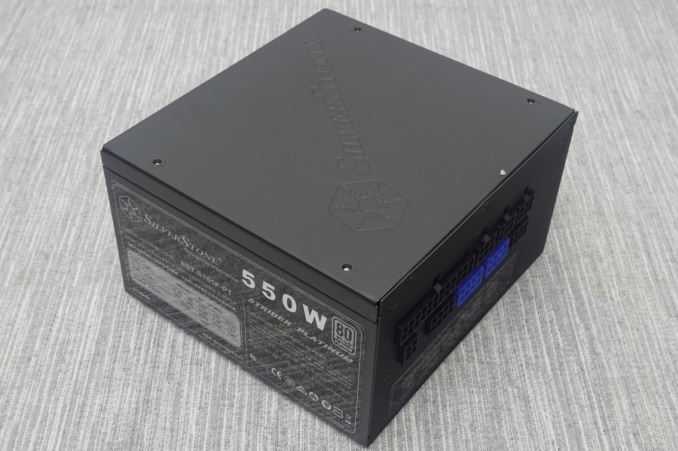
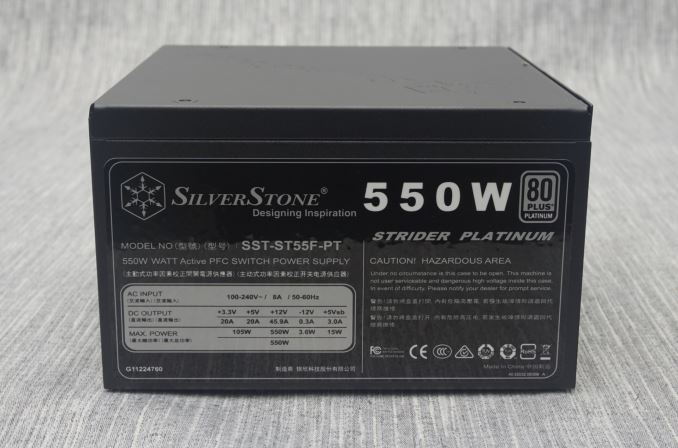
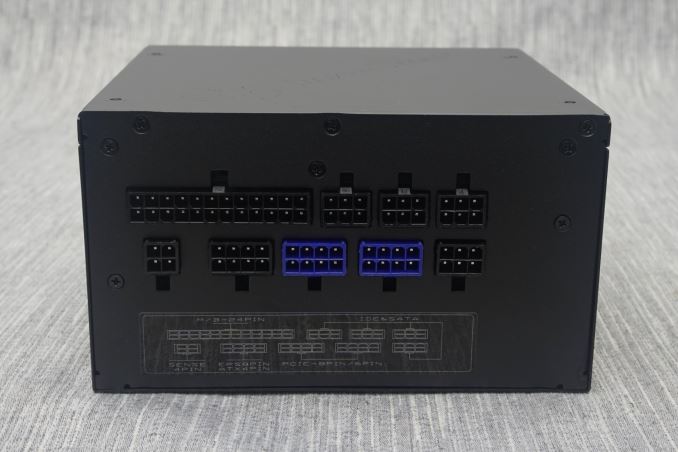
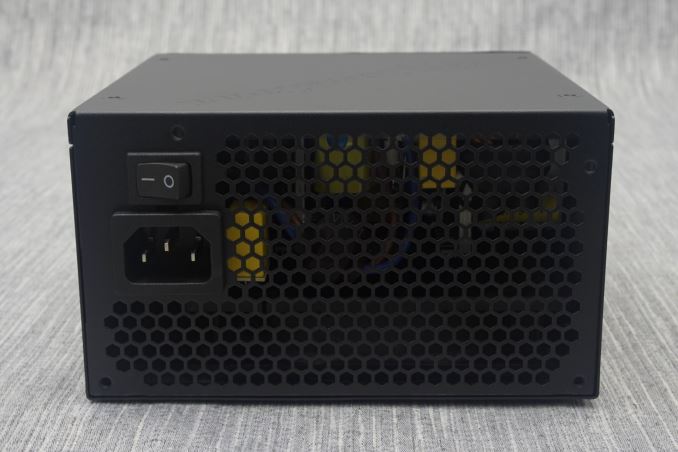
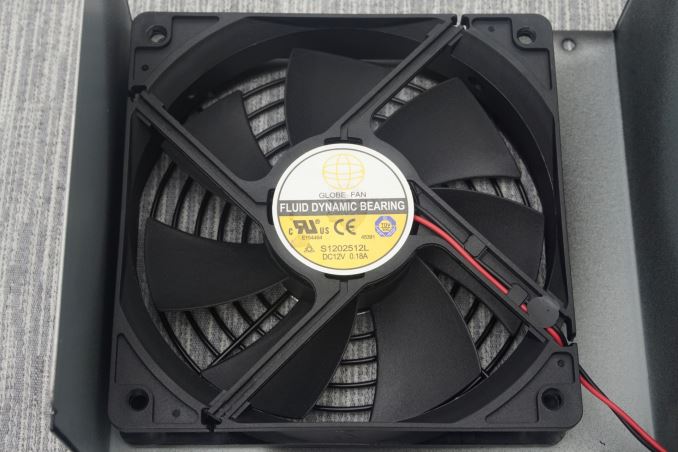














27 Comments
View All Comments
tarqsharq - Friday, April 8, 2016 - link
First sentence of the Final Words section broke.revanchrist - Friday, April 8, 2016 - link
SilverStone ST60F-TI is even more mind blowing. 600W Titanium and very compact in size. Also fully modular.JoeyJoJo123 - Friday, April 8, 2016 - link
Titanium rated power supplies would be a lot more appealing if you lived in a region that used 230V for the main electric line. North America uses 115V and any Titanium rated PSU would function (at best) at Platinum level efficiency there.Daniel Egger - Friday, April 8, 2016 - link
Not sure where you got your information from but this seems to be incorrect according to a quick check with Wikipedia.JoeyJoJo123 - Friday, April 8, 2016 - link
http://www.techpowerup.com/forums/threads/super-fl..."80 Plus Titanium is where it's at. Applicable only in regions with 220~230VAC domestic power, 80 Plus Titanium requires a PSU to offer at least 94 percent efficiency at 20 percent load, at least 96 percent efficiency at 50 percent load, and at least 91 percent efficiency at 100 percent load."
The way I read it is that 80+ Titanium efficiency only worked in households supporting 230V lines, however, if you're at 115V, you wouldn't get the full 80+ Titanium efficiency you'd probably be at around 80+ Platinum efficiency rating.
Also note that the efficiency requirements are different for regions with different main electric supplies. North America, Brazil, Japan, etc has lower requirements to hit the same efficiency benchmarks (Bronze, Silver, etc) than 230V countries.
Daniel Egger - Friday, April 8, 2016 - link
How about you check with some authoritative source? I get you don't trust Wikipedia, how about the official homepage? http://www.plugloadsolutions.com/80PlusPowerSuppli...The only case where 80 Plus Titanium isn't defined is 115V industrial, which doesn't apply here. For any other case it is defined and a lot stricter than Platinum.
nevcairiel - Friday, April 8, 2016 - link
Fact remains that PSUs are generally more efficient when running at 230V, and the 80 Plus specification reflects that by lowering the limits on 115V.The comment about Titanium JoeyJoJo123 quoted probably applied to one particular PSU which was 230V Titanium but didn't quite reach it for 115V, which may be a bit harder to hit?
Daniel Egger - Saturday, April 9, 2016 - link
> Fact remains that PSUs are generally more efficient when running at 230V, and the 80 Plus specification reflects that by lowering the limits on 115V.True but besides the point. If a product is rated for "80 Plus Titanium" compliance it actually needs to comply with the requirements in each category and in each category Titanium has stricter demands than the Platinum tier. In other words: If you take a Titanium unit and operate it at 230V it needs to match the Titanium requirements for 230V, if you take the same unit to NA and operate it at 110V it still needs to comply with the Titanium requirements but the ones for 110V (which are a bit less strict than the 230V ones but still stricter than the Platinum tier at the same voltage).
Daniel Egger - Friday, April 8, 2016 - link
This is one very sexy PSU indeed. Thanks for bringing it to my attention...dreamcat4 - Saturday, April 9, 2016 - link
Hey Anandtech! The Silverstone SX700-LPT 700W Platinum SFX-L is finally due to become avavailable and start shipping this month / very soon. After unspecified teething / production issues has delayed production. Therefore now would be a very good time to review it.